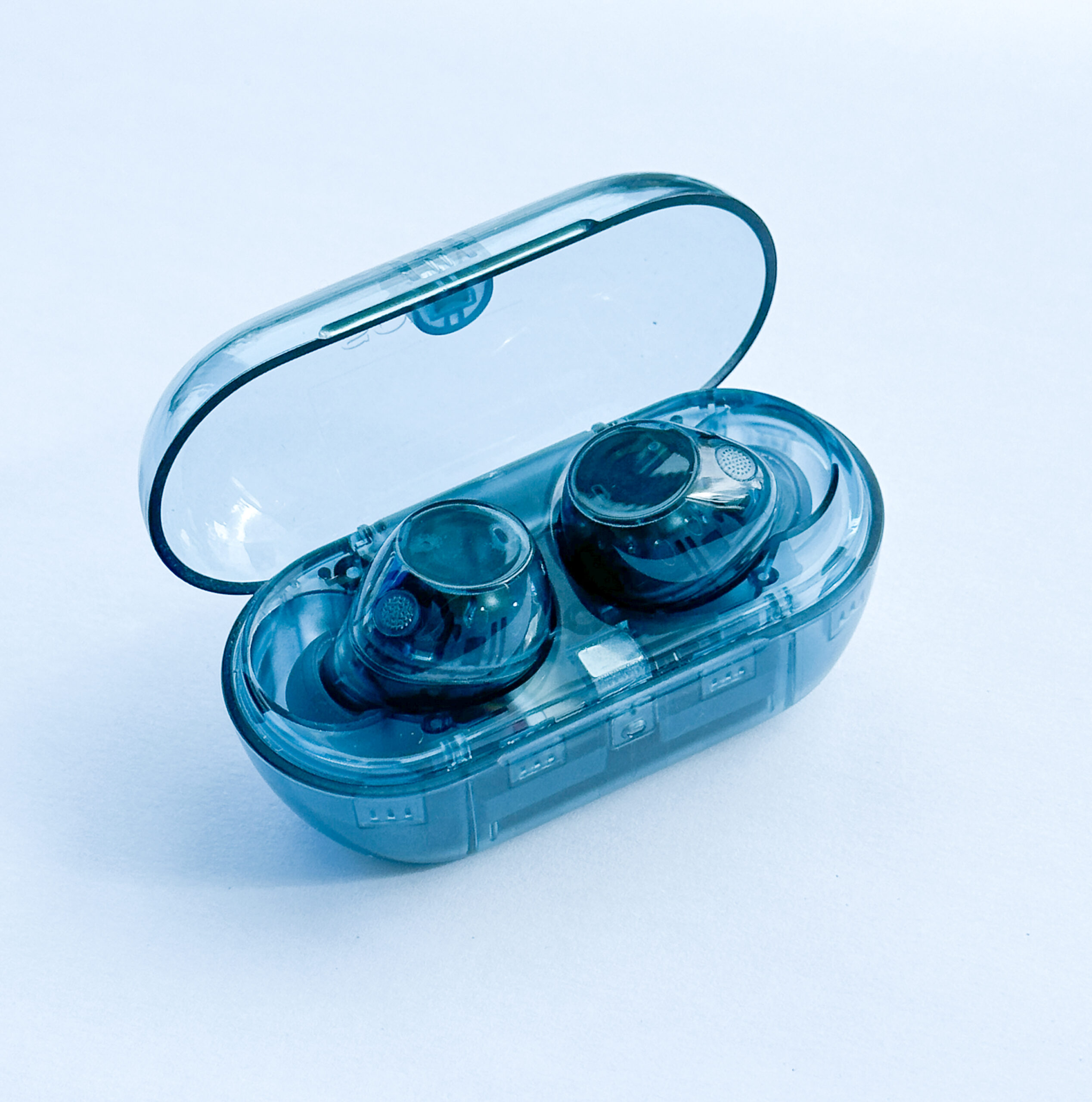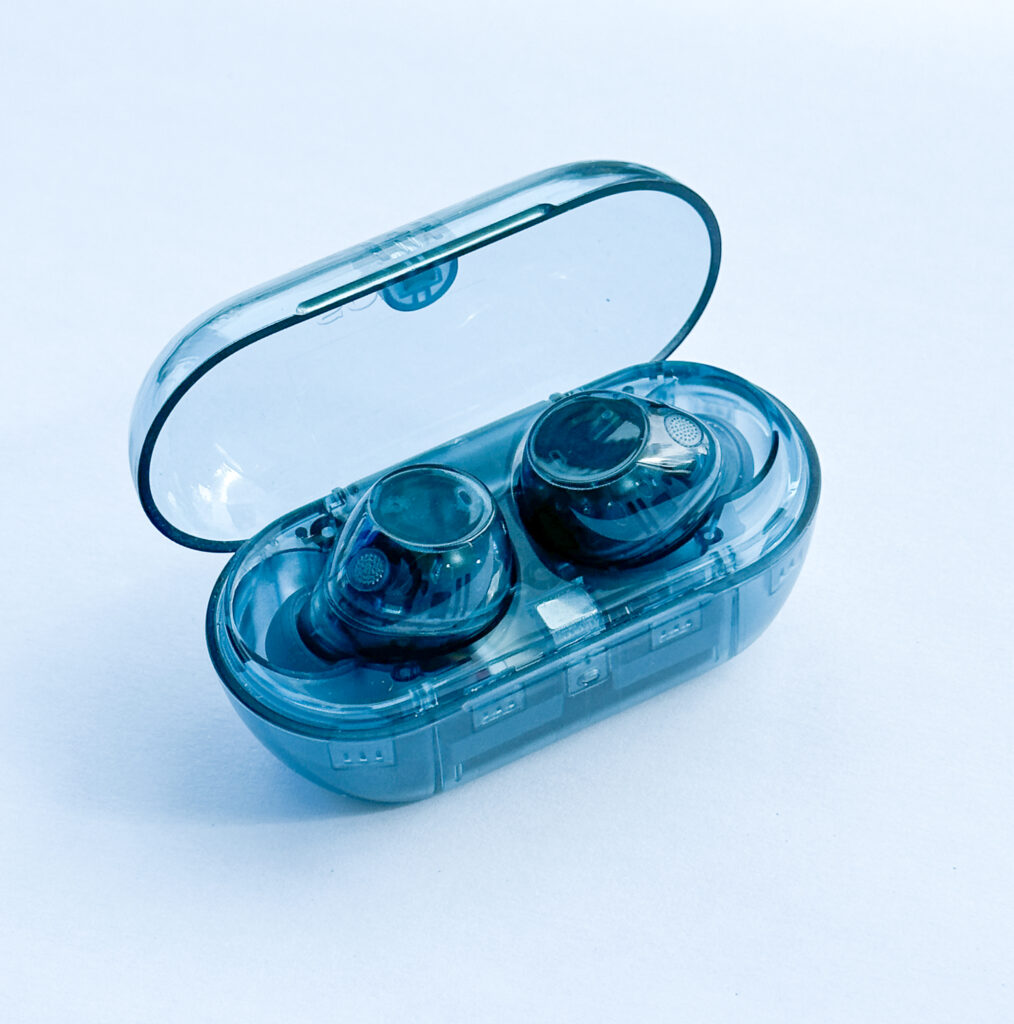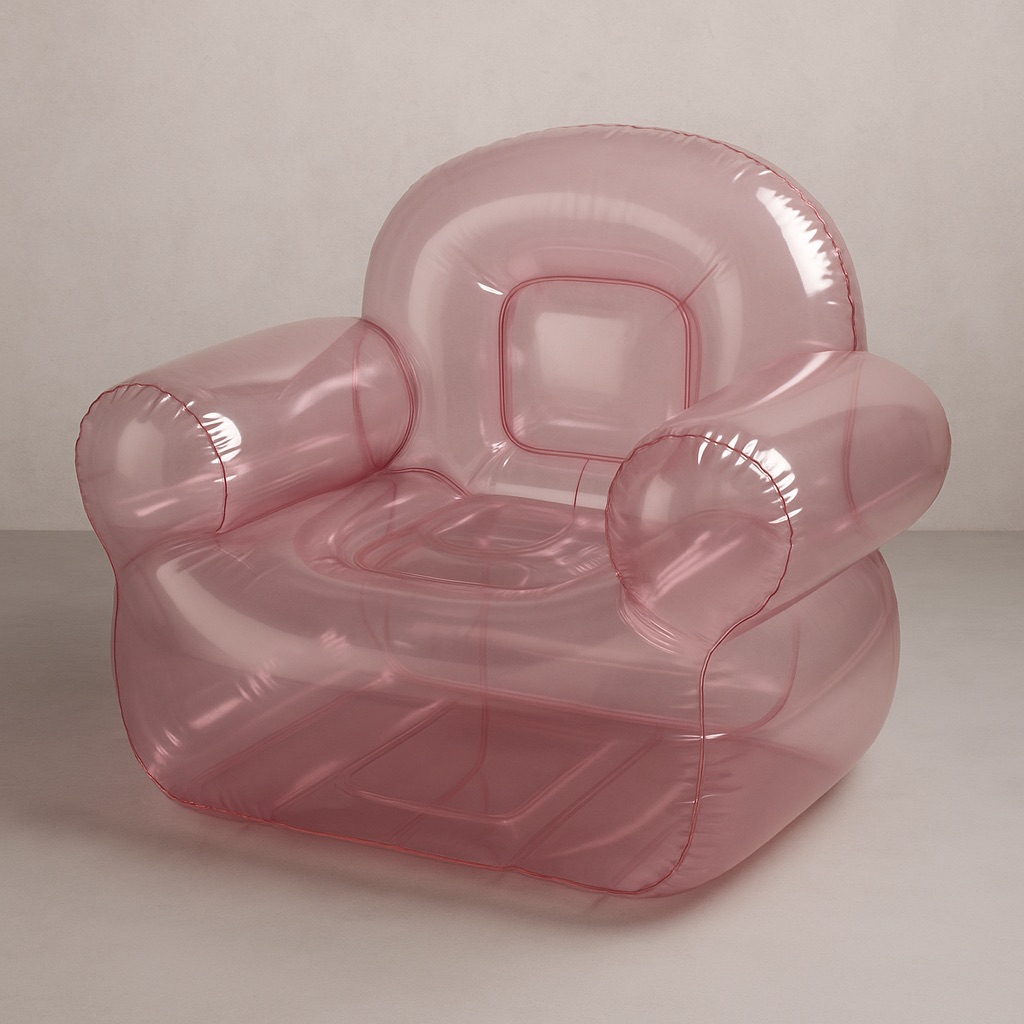
03 Sep The hidden genius of clear design

The surprising depth behind the ‘clear craze’ and transparent tech
Transparent design isn’t just eye-catching — it’s thought-provoking. From the playful nostalgia of translucent tech like the Game Boy to the modern sophistication of products like the Nothing Earbuds, there’s an enduring allure to seeing how things work. But this trend is more than a style; it’s a statement. Transparent products challenge designers to rethink how we build, how we connect with users, and how we create meaning through every choice.
What I find fascinating about transparency is its dual nature. On one hand, it’s deeply practical — showcasing function and inviting curiosity. On the other, it embodies a philosophy of openness, accountability, and trust. Designing with transparency pushes us to embrace simplicity, elevate every detail, and communicate something greater than just the product itself.
In this blog (rant! I like to write!), I’ll explore the profound lessons transparent product design can teach us. From the practical challenges it presents to the way it aligns with core design values, it’s clear that this is more than just a passing trend. It’s a reminder of why great design is always honest, intentional, and human.
Why showing the inner workings matters
At its heart, transparency is about celebration. It’s about celebrating the engineering, the craftsmanship, and the thought that go into every detail of a product. Transparent design doesn’t just reveal components — it reveals intention.
When you see a Dyson vacuum’s clear dust canister or the internal circuits of a Nothing Phone, you’re witnessing more than functionality; you’re seeing a story. Each wire, screw, and seam tells you that this product was made with care and that nothing is left to chance. As a designer, this resonates deeply. When we prototype products at Paraform, there’s always a moment where I marvel at the raw mechanics before they’re hidden away. Transparent designs skip that final cover-up and show you the magic.

The power of simplicity to build trust
Transparency isn’t just about product design aesthetics — it’s a statement of confidence. When a product is transparent, it’s saying, “I have nothing to hide.” That kind of simplicity is rare, and it’s one of the fastest ways to build trust with users.
As a designer, I think a lot about simplicity — not the kind that’s about removing complexity, but the kind that’s about removing confusion. Transparent gadgets strip away doubt. They make you feel secure because you can see exactly what you’re holding, how it works, and why it’s been made the way it has.
This principle is reflected in transparent tech gadgets, where clear casing highlights not only the product’s function but also its quality. Transparency removes the guesswork and adds a layer of emotional security that opaque products often lack.
One project that really brought this home for me was designing a product that required frequent user maintenance. It wasn’t enough for the product to work well — it needed to communicate intuitively how it worked. We incorporated a transparent panel into the design so users could visually check its functionality. The result wasn’t just practical; it built a deeper sense of trust with the end users. They didn’t have to guess or rely on hidden mechanisms. They could see for themselves that everything was in order. That kind of clarity can transform a user’s relationship with a product.
I’ve also noticed this principle in the brands I’ve worked with. The companies that build trust with their clients tend to be the ones that don’t rely on smoke and mirrors. They’re upfront about their processes, their materials, and even their challenges. I remember working with a client who insisted on showing every step of their sustainable production process in their marketing materials. The level of openness felt bold at the time, but it earned them incredible loyalty from their customers. Their products, much like transparent designs, communicated integrity simply by revealing what was behind the curtain.
It’s a concept rooted in one of my favourite design philosophies: honest design. When form and function are so tightly intertwined that you can’t separate one from the other, you get something that feels inherently right. Transparency forces you to reach for that level of clarity in every decision. It’s not just about making something look good; it’s about making something you can stand behind, knowing that every layer — visible or not — has been thoughtfully considered.
This philosophy isn’t just about the final product; it shapes the entire design process. When I design with transparency in mind, it’s like holding myself accountable to the user. It’s a subtle, powerful way to say, “I trust this design enough to let you see everything about it — and I trust you to appreciate it.”
The delicate art of designing for transparency
Every detail counts when nothing is hidden
Designing for transparency is not for the faint-hearted. It requires an uncompromising commitment to precision. When every component is on display, there’s no room for shortcuts. That crooked wire? It’s part of the story. That misaligned screw? It’s now a focal point — and it better be intentional.
But here’s the thing: what might seem like flaws in another context can become defining features in transparent design. Rather than imperfections, these details take on the role of storytellers, revealing the process and care behind a product.
Take the iconic Swatch Jelly watches. When they first debuted, the transparent casing put the internal gears on full display. It wasn’t just about telling time — it was about showing you how time was being kept. Those exposed, brightly coloured mechanisms became part of the product’s charm. The watch wasn’t hiding its complexity; it was celebrating it, turning what could have been seen as industrial or cold into something playful and engaging.
This mirrors how the 2000 clear craze popularised transparency as a design aesthetic. It wasn’t just a Y2K clear craze in tech; it became a statement about openness, accessibility, and ingenuity.
Another perfect example is the original iMac G3, with its translucent casing. Released in the late 1990s, it wasn’t just a computer — it was a statement. This kind of integration reflects the principles of industrial design expertise, where function and form are fused into something emotionally resonant and innovative. You could see inside, where the technology lived, and that transparency gave users an almost emotional connection to the product. At a time when most computers were beige and boxy, the iMac’s vibrant colours and exposed components screamed innovation and accessibility. Apple turned its internal hardware into part of the design language, making the iMac feel approachable, even friendly.
These products highlight how transparency turns perceived flaws into features. By revealing every detail, you create an invitation for users to look closer, to engage with the story of the product. It’s a powerful way to build connection and trust because it strips away the mystery and replaces it with authenticity.
For me, that’s the heart of designing for transparency: the chance to let the product’s inner workings speak for themselves. Every wire, gear, and circuit becomes part of the narrative, and that narrative gives the product its personality. Great design doesn’t just accommodate imperfections — it uses them, refines them, and transforms them into opportunities to connect on a deeper level. Transparent design doesn’t hide complexity; it frames it as a core part of the experience.
What I’ve learned from working with materials like this
Working with transparent materials has taught me that clarity demands discipline. It’s not just about material analysis; it’s about making sure every part works harmoniously.
Take a product like a water filtration system. A clear casing might show off the filtration process, but it also puts pressure on the design team to ensure the internal components are as aesthetically pleasing as the exterior. That’s a level of accountability that opaque products don’t always demand, and it’s what makes transparent design so rewarding.
Why people are drawn to transparent products

Transparency sparks curiosity and connection
Transparent products create an immediate sense of engagement. When you can see inside something — whether it’s a pair of earbuds or a household appliance — it stops being just an object. It becomes a puzzle, a piece of craftsmanship, or even a work of art. The exposed elements invite you to linger, to explore, and to ask questions about how it all fits together.
This is the magic of the clear plastic trend, especially when applied to transparent tech. From gaming consoles to sleek audio devices, transparency connects users with the inner workings of the things they use daily.
I’ve seen this reaction countless times: people can’t help but pick up a transparent product, turn it over, and try to decode its workings. That moment of curiosity is where the connection happens. You’re not just using the product — you’re forming a relationship with it. It’s an interaction that goes beyond functionality, inviting the user to become part of the experience.
A window into craftsmanship and effort
Transparency also highlights the effort behind the product. It’s a quiet celebration of the time, skill, and precision that goes into its creation. When every wire, screw, and component is visible, it’s a reminder of the human ingenuity that made it possible. That visibility creates a deeper emotional bond because it’s no longer a black box; it’s a story you can see and appreciate every time you use it.
Changing values demand greater transparency
An era of accountability
We’re living in a time when trust in brands is fragile, and consumers are asking harder questions: Where did this product come from? How was it made? Is it aligned with my values? For Millennials and Gen Z, these aren’t afterthoughts — they’re deal-breakers. Transparent design offers a response. It’s a way for brands to say, “Here’s everything you need to know. No secrets. No compromises.”
It’s why you see brands using transparency not just in their products but in their entire approach to business. Think of brands that share behind-the-scenes glimpses of their manufacturing process or provide clear documentation of sustainability efforts. This mirrors the values embedded in eco-friendly design, which demand accountability and transparency from the ground up.
Sustainability through visibility
Transparency aligns perfectly with the push toward sustainability. It’s not just a style; it’s a signal. When you can see the recycled materials in a product or the modular design that allows for easy repairs, it communicates a commitment to responsible production. Transparency makes sustainability tangible, turning it into something you can literally see and understand.
This is why clear glass design and modular transparency are rising in popularity. It’s about more than just aesthetics; it’s about trust and accountability.
The future of see-through design
Designing with purpose and clarity
The future of transparent design isn’t just about showing components — it’s about rethinking how we design products altogether. Imagine a modular smartphone where every piece is visible and replaceable. You’d no longer throw the whole thing away when one part breaks; you’d fix it, extending its life and reducing waste. Transparency would be the physical embodiment of a more sustainable, user-friendly approach to technology.
Bringing clarity to smart technology
Transparency has the potential to redefine how we interact with technology. A wearable fitness tracker, for example, could show its inner workings while also displaying real-time data in an intuitive, visual way. That kind of clarity isn’t just engaging — it’s empowering. It helps users feel in control of the technology they rely on, making it a tool rather than an enigma.
Alright, let’s wrap this up
The real future of transparent design isn’t about clear casings or exposed components — it’s about the mindset it fosters. Transparency asks designers to think beyond the surface and consider how every choice — visible or not — affects the user experience. It’s a philosophy that prioritises openness, honesty, and functionality. The result isn’t just better-looking products; it’s better products, period.
Transparency has taught me a lot as a designer. It’s shown me that great design isn’t about hiding complexity — it’s about embracing it. It’s about being bold enough to say, “This is who I am, and this is how I work.”
At Paraform, this is a philosophy we carry into every project. Whether it’s about refining an idea, building a prototype, or crafting something entirely new, we believe in designing with clarity and purpose. If you’re ready to create something thoughtful and impactful, we’d love to help. Together, we can design with nothing to hide.



